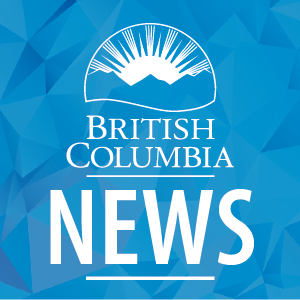Prescribed burning is planned east of Vernon in the Satellite Hill and South Fork areas between March 25, 2014, and May 16, 2014, weather conditions permitting.
This controlled burning will assist with ecosystem restoration and will occur in several phases during this period. The burns will be conducted by Wildfire Management Branch crews and ministry staff in the Okanagan Shuswap Natural Resource District.
- The Satellite Hill burn area covers an estimated 20 hectares, approximately six kilometres south of Lumby and Highway 6 in the Harris Creek area.
- The South Fork burn area covers an estimated 32 hectares, approximately 10 kilometres east of Cherryville, north of Highway 6.
These ecosystem restoration burns were originally scheduled to take place in fall 2013, but they were not completed due to unsuitable burning conditions at the time.
Historically, grasslands and open forests in the Okanagan have been renewed through frequent, low-intensity ground fires. Such fires limit tree encroachment, rejuvenate understory plants (trees and shrubs that grow beneath the forest canopy, but above ground-cover plants) and maintain open grassland and open forests containing large trees.
The reintroduction of managed, low-intensity ground fires to these grasslands and open forests is intended to restore and maintain plant communities that are native to these areas. These managed fires also reduce fuel loads, leading to a decreased risk of wildfires.
Prescribed burns are part of an ongoing ecosystem restoration program administered by the government of British Columbia through the Okanagan Shuswap Ecosystem Restoration Steering Committee and in collaboration with local ranchers, local forest licensees, various outdoor organizations, the B.C. Wildlife Federation and the Wild Sheep Society of British Columbia.
A factsheet follows.
Media Contacts:
Kayla Pepper
Fire Information Officer
Wildfire Management Branch
Kamloops Fire Centre
250 554-5530
FACTSHEET
Prescribed burning used as ecosystem management tool
- Fire is a normal, natural process in many of British Columbia’s ecosystems. Many species of plants, birds, insects and other animals depend on fire for its regenerative properties.
- Fire helps control insects and the spread of disease in forests. It also contributes to forest succession, as younger trees replace older trees. Having trees of various ages in a forest helps creates biodiversity.
- Prescribed burning is one of the tools used by forest professionals to achieve land management objectives. For example, fire can be used to enhance habitat and improve forage for cattle, deer, bighorn sheep and moose. A controlled burn also can reduce fuel loads (combustible material such as underbrush and dead wood) and reduce the risk of wildfire in interface areas (where urban development borders on rural areas).
- The size and intensity of prescribed burns are carefully planned and controlled to meet management objectives for fire-maintained ecosystems. Prescribed burns are only ignited when weather conditions are favourable and when the fire will not create excessive smoke. Important factors that are used to determine the date of a burn include the venting index, temperature, humidity and wind conditions.
- The venting index is a measure of how quickly smoke will disperse under specific conditions. Prescribed fires may only be ignited on days when the forecast for the venting index is “good” or better.
- All prescribed burns must comply with the Environmental Management Act and the Open Burning Smoke Control Regulation. This helps minimize the amount of smoke generated.
- A prescribed burn is ignited and continuously monitored by trained firefighting crews to ensure that the fire does not get out of control. The fire crew supervisor (the “burn boss”) is responsible for ensuring that the initial burn conditions are favourable and that the fire is extinguished once the prescribed burn is completed.
Media Contacts:
Kayla Pepper
Fire Information Officer
Wildfire Management Branch
Kamloops Fire Centre
250 554-5530



